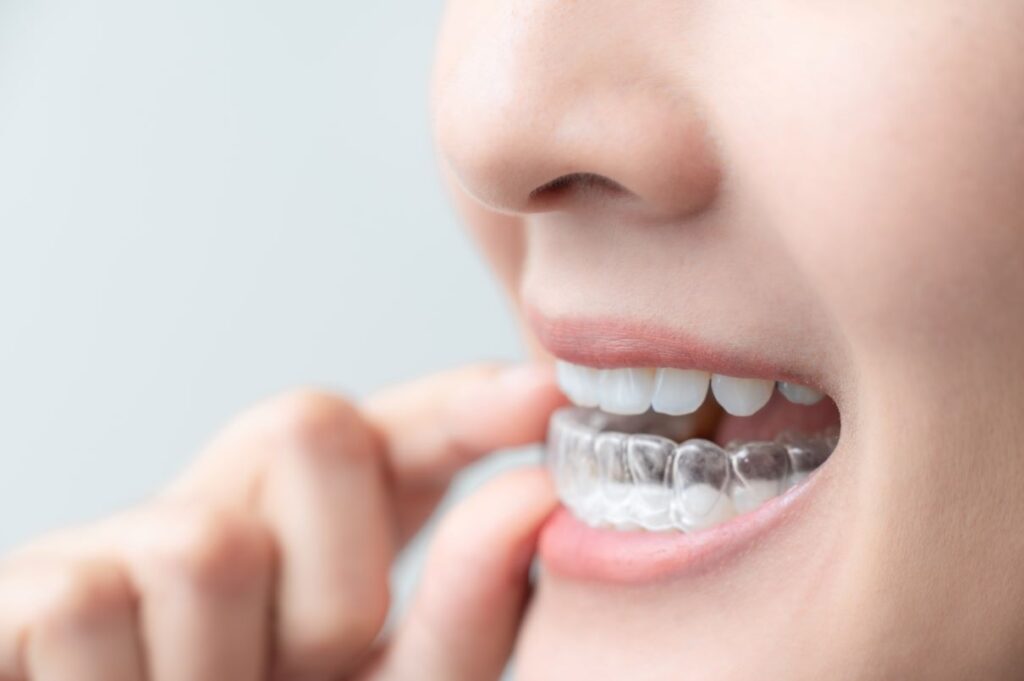Which Oral Health Problems Can Invisalign Treat?
June 20, 2024

Invisalign aligners have truly changed the face of modern orthodontics. They aren’t just less noticeable than traditional braces, they are also easier to care for and make caring for your teeth easier, too. But while Invisalign has multiple unique benefits, it isn’t always a good fit for everyone. That’s because it cannot correct certain orthodontic issues. If you’re wondering if you’re a good candidate for Invisalign, here’s a basic breakdown of what it’s capable of fixing and a few things it can’t.
What Can Invisalign Correct?
Overbite
An overbite is when your upper teeth close too far in front of your bottom teeth, making it difficult to bite into and chew certain foods.
Underbite
An underbite occurs when your lower teeth stick out further than your upper teeth, increasing your risk of tooth damage and making speech difficult.
Crossbite
When some of your upper teeth sit inside the lower teeth, this is known as a crossbite. Crossbites can cause chipped teeth and can increase your risk of gum recession.
Crooked Teeth
Crooked teeth occur when the teeth are simply out of alignment. You can have a bad bite as well as crooked teeth, or your teeth can simply be crooked with no other issues present.
Gaps in Teeth
If you have any gaps between your teeth, this can cause spacing issues which affect all your teeth by making it easier to trap food and bacteria and harder to floss.
Crowding
Crowding presents a similar problem to gaps, in that crowded teeth can be harder to clean and can make it easier to get cavities and gum disease.
What Invisalign Usually Cannot Correct
While there is plenty that Invisalign can correct, there are still a few issues that are best left to traditional braces. These include:
- Patients with short, pegged, or round teeth may not be able to get a good fit with clear aligners.
- If a molar is rotated more than 20 degrees or a tooth is tilted more than 45 degrees, traditional braces must be used to correct them.
- Large gaps between teeth are best left to wire and bracket braces.
- If your teeth need to be lowered or raised to be more uniform, you are likely not a good candidate for Invisalign. While it can move the front teeth slightly, it cannot do this for back teeth.
- Midline (the imaginary line down the center of your face) movements can be made up to 2mm with Invisalign, however anything larger must be accomplished with braces.
- Previous dental work like bridges, crowns, or veneers may make using Invisalign impossible.
The good news is that while there are a few things Invisalign can’t treat, there are still many things it can, and in many cases even faster than traditional braces could. If you are interested in finding out whether you are a good candidate for Invisalign, speak to your dentist about your options today.
About Dr. Devarakonda
Dr. Durga Devarakonda is proud to provide quality care to patients from age one to 101. She is an active member of the American Dental Association, the Texas Dental Association, and the Massachusetts Dental Society, and the North Texas Dental Society. Dr. Devarakonda and the team at DD Family Dentistry are skilled in a wide range of treatments from general dentistry to Invisalign.
To schedule an appointment, please visit our website or call 972-919-0540.
No Comments
No comments yet.
RSS feed for comments on this post.
Sorry, the comment form is closed at this time.
